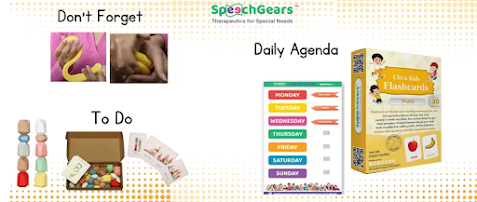How Social-Emotional Learning and Autism are Related
Acquiring & applying social and emotional abilities is known as social-emotional learning (SEL). Understanding and managing emotions, setting goals, making decisions, cooperating, resolving conflicts, having empathy for others, resolving problems, and working as a team, SEL skills are essential (to name a few). From the time they are babies, kids begin learning these talents and keep developing them until they are adults.
The five main components of SEL talents are as follows:
- Self-Awareness perceiving emotions, identifying needs and strengths, and cultivating a growth mindset and the ability to empathize with others, view the world from their perspective, and value differences.
- Self-Management includes controlling one's emotions, desires, and goals.
- Communication, cooperation, and conflict resolution are relationship skills.
- Making decisions responsibly means considering how one's actions will influence oneself and others.
People with autism frequently have trouble identifying and controlling their emotions. Making ethical decisions or maintaining social awareness may be challenging in light of this. People with autism may not be able to communicate or describe their sentiments, but that doesn't mean they aren't affected by them. Alexithymia refers to the inability to name feelings, or more precisely, to name and describe one's emotions. The underlying neurological source or basis of this alexithymic sensation is interoception, the 8th sense.
Using SEL Techniques in Regular Activities
Elizabeth uses the following SEL infusion techniques:
Teachable Moments: These are unplanned chances for engagement, practise, and understanding. These situations frequently occur in life. Throughout the week, my autistic daughter and I engage in various activities, such as baking, playing board to teach good sportsmanship, and watching movies together where we freeze and discuss the action or character motivation.
Modeling: During games and other instructional moments, we can serve as role models. My kids are constantly reminded of my shortcomings and shown how I may improve.
Social Priming: is the practise of anticipating social interactions before they take place. There will be who? What is our destination? How much time will it take? What should I do while I'm there? Look over the hidden curriculum as well. Before taking my kids to their first baby shower in June, I did this. Since this was a little different than attending a birthday celebration, we talked over everything that would occur.
Social Debriefing: Discuss what transpired following. When we finish the activity and get in the car, I usually do this while everyone's memories are still fresh.
Giving assistance, direction, or prompting. Could accomplish this by utilizing visual aids, Social Stories, and vocal communication.
Recognizing and Comprehending: one's emotions is the first step in teaching social-emotional development. Starting with interoceptive awareness will lay the groundwork for developing the five major SEL skill areas. This is a protracted, ongoing process, but the journey may be enjoyable and exciting as we gain a greater understanding of who we are and how we feel.
SpeechGears India are designed sensory regulation tools to help people with autism cope with sensory overload and manage their reactions to various stimuli. We have many different types of sensory therapy tools available at affordable prices.
Our Source Url: https://speechgearsindia.mystrikingly.com/blog/how-social-emotional-learning-and-autism-are-related


.jpg)

Comments
Post a Comment